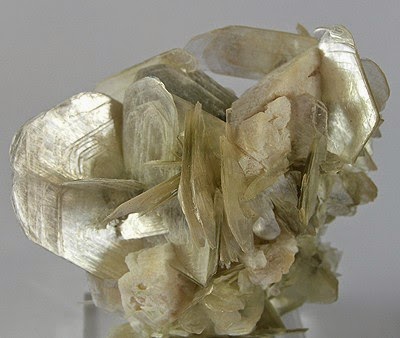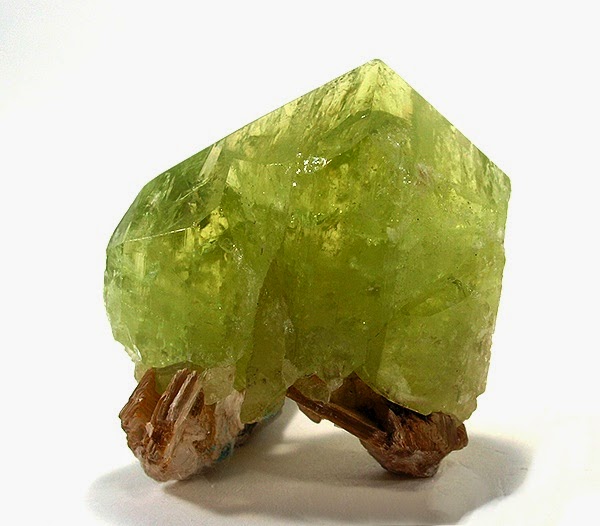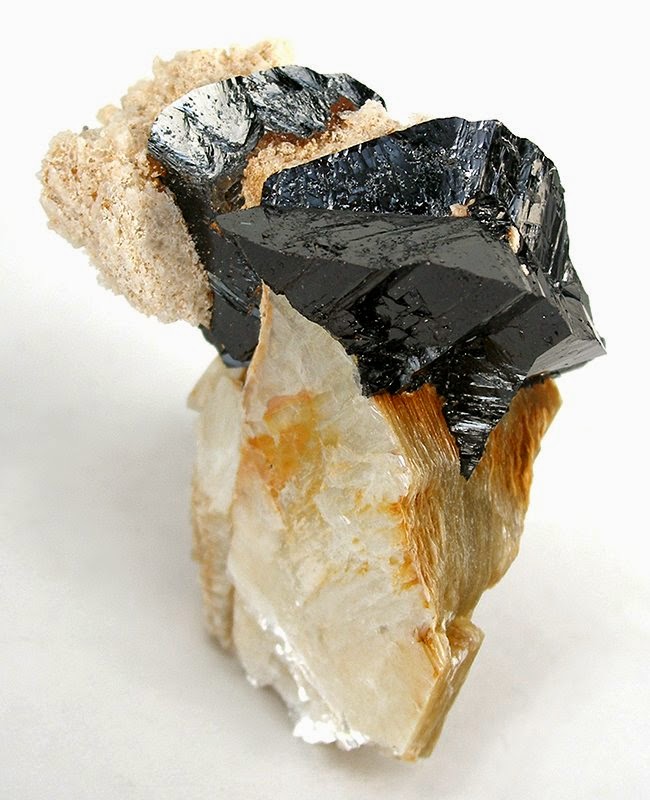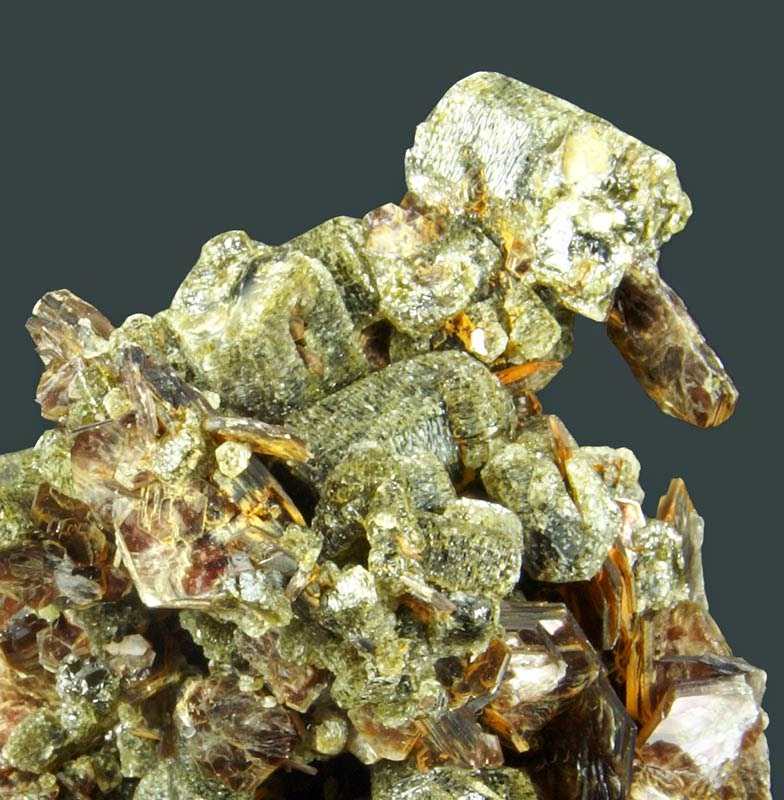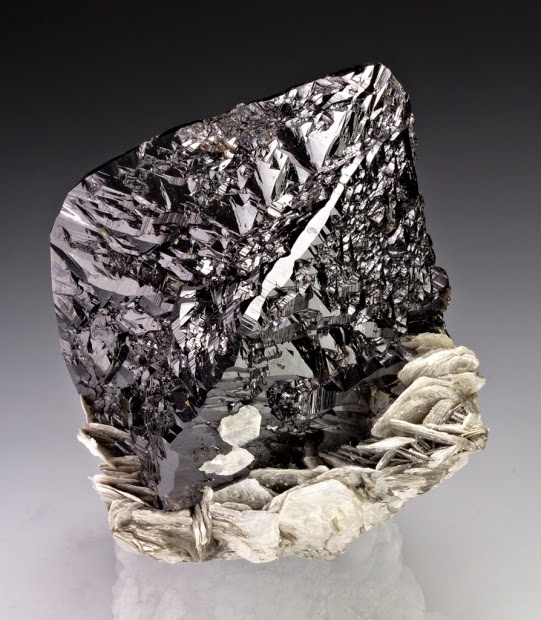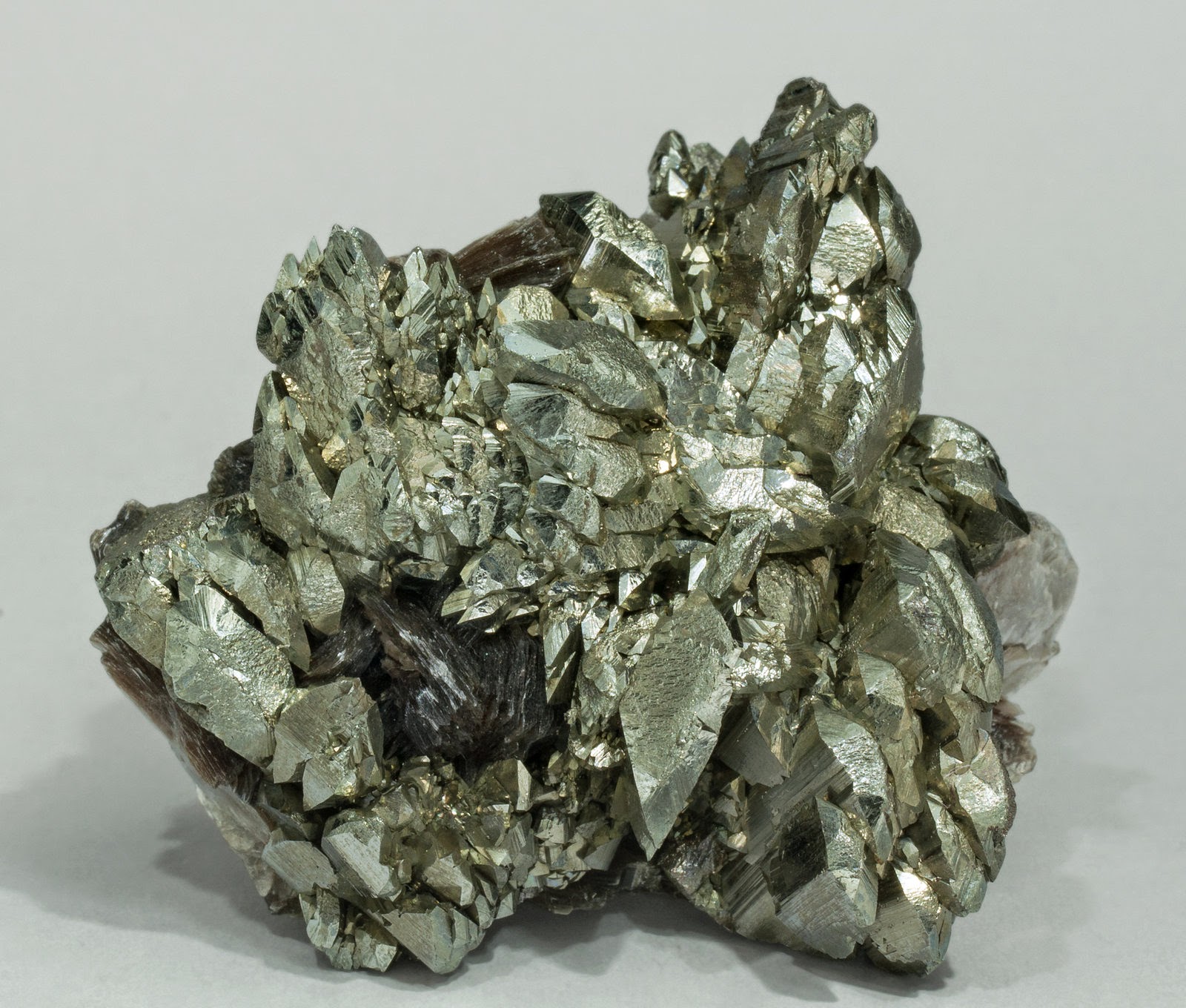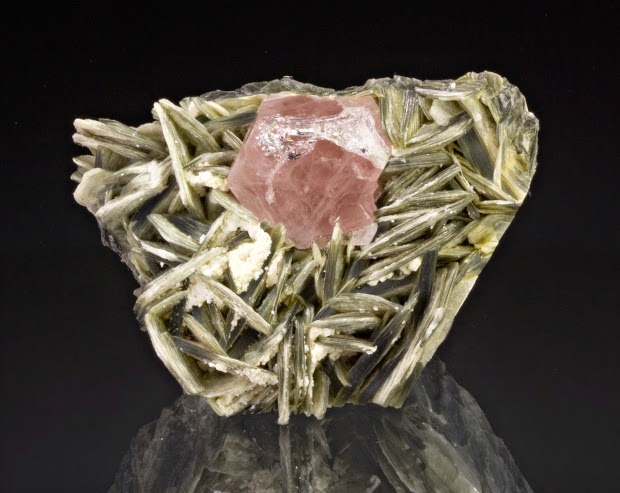
Chemical Formula: KAl2(AlSi3O10)(OH)2
Locality: Common world wide.
Name Origin: From Muscovy glass, alluding to the Russian province of Muscovy.
Muscovite is a phyllosilicate mineral of aluminium and potassium . It has a highly-perfect basal cleavage yielding remarkably-thin laminæ (sheets) which are often highly elastic. Sheets of muscovite 5×3 m have been found in Nellore, India.
Muscovite has a Mohs hardness of 2–2.25 parallel to the [001] face, 4 perpendicular to the [001] and a specific gravity of 2.76–3. It can be colorless or tinted through grays, browns, greens, yellows, or (rarely) violet or red, and can be transparent or translucent. It is anisotropic and has high birefringence. Its crystal system is monoclinic. The green, chromium-rich variety is called fuchsite; mariposite is also a chromium-rich type of muscovite.
Muscovite is the most common mica, found in granites, pegmatites, gneisses, and schists, and as a contact metamorphic rock or as a secondary mineral resulting from the alteration of topaz, feldspar, kyanite, etc. In pegmatites, it is often found in immense sheets that are commercially valuable. Muscovite is in demand for the manufacture of fireproofing and insulating materials and to some extent as a lubricant.
The name muscovite comes from Muscovy-glass, a name given to the mineral in Elizabethan England due to its use in medieval Russia as a cheaper alternative to glass in windows. This usage became widely known in England during the sixteenth century with its first mention appearing in letters by George Turberville, the secretary of England’s ambassador to the Russian tzar Ivan the Terrible, in 1568.
History
Discovery date : 1850
Optical properties
Optical and misc. Properties: Transparent – Translucent
Refractive Index : from 1,55 to 1,61
Axial angle 2V : 30-47°
Physical Properties
Cleavage: {001} Perfect
Color: White, Gray, Silver white, Brownish white, Greenish white.
Density: 2.77 – 2.88, Average = 2.82
Diaphaneity: Transparent to translucent
Fracture: Brittle – Sectile – Brittle fracture with slightly sectile shavings possible.
Hardness: 2-2.5 – Gypsum-Finger Nail
Luminescence: Non-fluorescent.
Luster: Vitreous (Glassy)
Streak: white
Photos :
